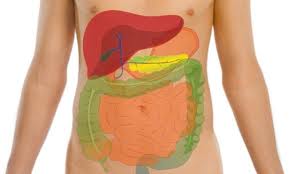Diets
- AIDS Diet
- Athletes's Diet
- Atkins Diet
- Bodybuilding Diet
- Breast Feeding Diet
- Cabbage Soup
- Cancer Patient's Diet
- Cardiac Patient's Diet
- Pediatric Diet
- Diabetes Diet
- Diet Plan
- Diet Programs
- Fitness Diet
- Cardiac Patients
- Kidney Disease Diet
- Low Calorie Diet
- Hypertension Diet
- Pregnancy Diet
- High Protein Diet
- Sports Diet
- Vegetarians Diet
- Weight Gain
- Fasting Diet
- Calorie Diets
- Celebrity Workout
- Diet for Gout
- Herbal Diets
- Zone Diet
- Herbal Phentermine
- South Beach Diet
- High Fiber
- Low Carb Diets
- Low Carb Dieting
- Low Carb Dieter Eat
- Atkins Low Carb Diet
- Atkins Low Carb Diet Program
- Monounsaturated Fats
- Food Choices Low Carb Meals
- Shopping Right Supplements
- Top 3 questions for Low Carb Dieting
- Better Food Choices
- Fluorosis
- Wu Yi Tea
- Ultra Lean Green Tea
- Acai Berry Power 500
Free High Fiber Low Fat Diets

Doctors in favor of High Fiber Diet(s) encourage the consumption of foods that are high in dietary fiber. The thing is, humans cannot digest dietary fiber. So why is it important to eat foods that are rich in this plant substance? The reason is that your body’s ability to excrete waste is just as important as your body’s ability to absorb nutrients. And medical research shows that High Fiber Diet(s) enable your body to rid itself of waste much more efficiently than diets which don’t contain much dietary fiber. This is because dietary fiber keeps your digestive tract in optimal working condition.
What Exactly Does Dietary Fiber Do to Help My Digestive Tract?

Basically, dietary fiber helps waste to move through the intestines and out of the colon. Dietary fiber also regulates the amount of water that is absorbed from waste before it is excreted. These functions are important because as time goes by, waste that is difficult to excrete due to too much water absorption can get stuck and build up inside of the intestines and colon, often resulting in colon cancer.
Waste that contains too much water, on the other hand, is unhealthy because it means your body did not absorb the amount of water that it should have before excreting the waste, often resulting in dehydration. Basically, dietary fiber helps people to poop more easily and effectively, which is why many doctors recommend High Fiber Diet(s).
What Types of Diseases Can Be Prevented By Following a High Fiber Diet?

Recent scientific studies suggest that High Fiber Diet(s) are beneficial in treating and preventing certain gastrointestinal conditions such as diverticulosis, functional bowel disorders, and chronic constipation. High Fiber Diet(s) can also provide other health benefits as well, such as lowering your risk of diabetes and even heart disease.
Who Should Follow a High Fiber Diet?

Everyone can benefit from High Fiber Diet(s), but there are certain people who will find High Fiber Diet(s) especially beneficial. Recent studies suggest that diabetics can lower their blood glucose levels by about 10% just by adding 50 mg of dietary fiber to their existing diets. Also, High Fiber Diet(s) can provide relief to those suffering from hemorrhoids, chronic diarrhea or constipation, and irritable bowel syndrome.
How Do I Follow a High Fiber Diet?

High Fiber Diet(s) are relatively easy to follow. Most Dietary Fiber comes from breads, vegetables, fruits and nuts. Incorporating these items into your existing diet more regularly will automatically make your existing diet a High Fiber one. The general rule to follow according to The National Academy of Sciences Institute of Medicine is to add 38 grams of fiber to your diet if you are a male under 50 years old, and to add 25 grams of fiber to your diet if you are a female under 50 years old. Men over 50 should increase their dietary fiber intake by 30 grams, while women over 50 should increase their dietary fiber intake by 21 grams.
How Do I Know How Many Grams of Dietary Fiber I am Receiving?
Most food products contain nutrition labels that reveal how many grams of fiber are in a certain product. But for things such as fresh fruits and vegetables, which usually do not contain a nutrition label, the following chart may be useful:
Food Item (1 cup) |
Grams of Fiber |
Peas |
16.3* |
Raspberries |
8.0 |
Green Beans |
4.0* |
Red Kidney Beans |
13.1* |
Broccoli |
3.3 |
Cherries |
4.0* |
Medium Apple |
5 |
Brown Rice |
3.5* |
Blackberries |
6 |
Corn Flour |
15.7 |
*After cooking |
Are There Any Risks Involved in High Fiber Diet(s)?
Those interested in following High Fiber Diet(s) are strongly encouraged to adhere to The National Academy of Sciences Institute of Medicine’s guidelines mentioned above. People who receive too much fiber run the risk of colon cancer, as evidenced by recent medical studies.
